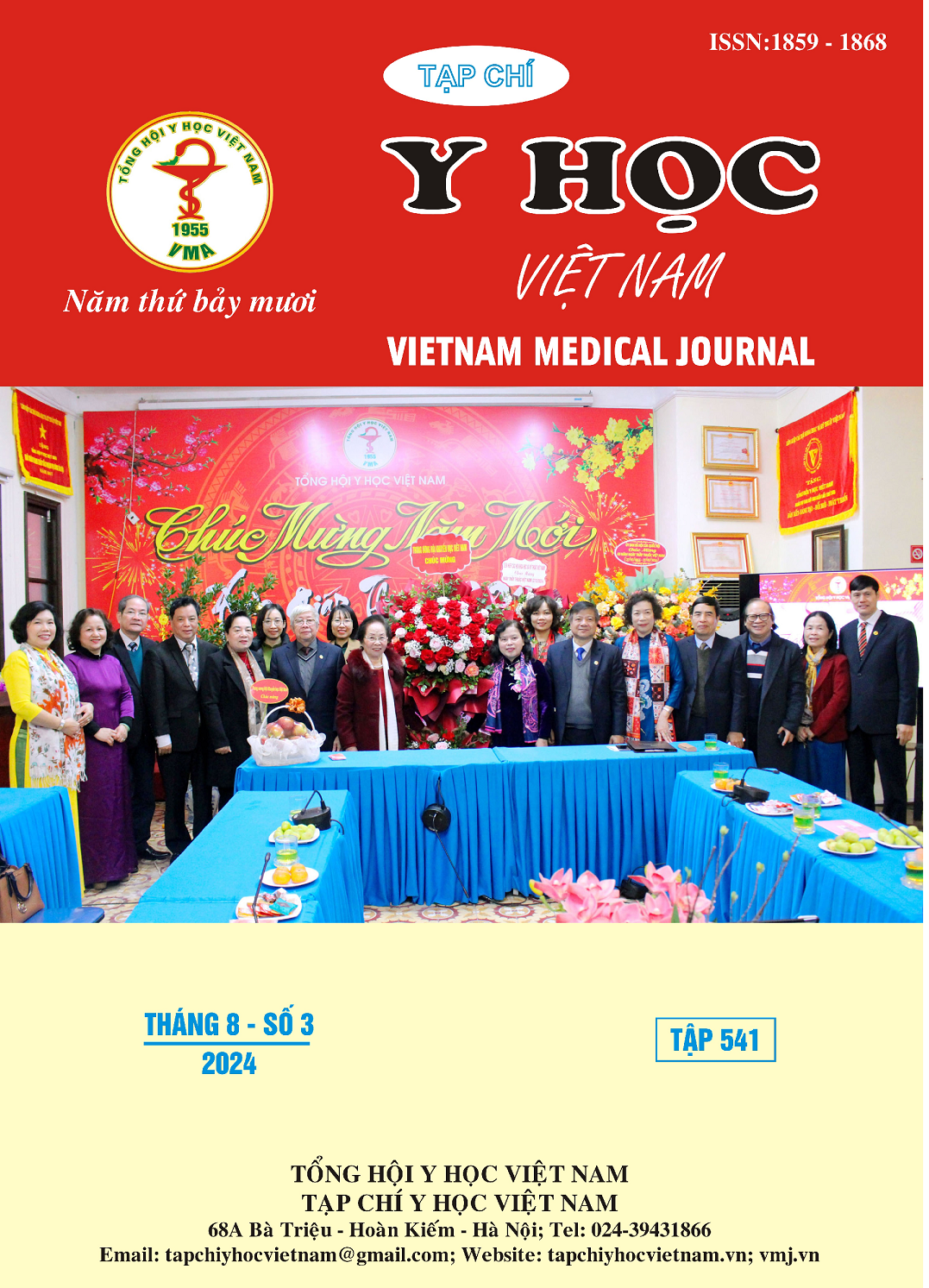CHARACTERIZATION OF THE “DEQI” RESPONSE AND EVALUATING THE INFLUENCE OF “DEQI” ON IMEDIETLYPAIN REDUTION AFTER ACUPUNCTURE FOR PATIENTS WITH SPONDYLOSIS
Main Article Content
Abstract
Background: Acupuncture is an essential part of Traditional Medicine. The World Health Organization endorses acupuncture for various conditions, including pain. Deqi plays a necessary role in achieving good acupuncture results. However, identifying the sensory components of Deqi is challenging to study because of its subjective nature. Therefore, the analgesic efficacy of acupuncture and its role in creating Deqi during acupuncture has been controverted. Objectives: To determine the intensity and frequency of the components of Deqi and evaluate the influence of qi on the analgesic effect immediately after acupuncture. Materials and methods: interventional study pre-post assessment on 45 low back pain patients due to Spondylolisthesis who came for inpatient examination and treatment at Can Tho Hospital of Traditional Medicine from February 2023 to October 2023. The patients was inserted into the lumbar acupoint at an angle of 900, 10-20 mm deep needles. The needle was twisted in the range of 90-1800, raised and lowered with a uniform amplitude of 0.3-0.5 cm, 1 second/time, 10 seconds for each acupoint, and retained for 20 minutes. The same needles stimulation was repeated after 7 and 15 minutes to achieve aspiration as frequently and significantly as possible. We observed the components of deqi by the Southampton Needle Sensation Questionnaire and assessed the intensity of low back pain by the Visual analog scale (VAS). Results: Among the sensations typically associated with deqi, pricking were most common (100%), followed by some feelling of discomfort (88,9%), heaviness (86,7%) spreading (86,7%), dull pain (77,8%), deep pain (75,6%), electric shock (66,6%), warm (62,2%), pressure (57,8%), tingling (55,6%). The most intense types of needling sensations were heaviness (1,98 ± 0,965), spreading (1,69 ± 0,848), dull pain (1,58 ± 1,011), followed by discomfort, deep pain, warm sensations. The average VAS before needle insertion was 73,6 ± 8,861mm, after 30 minutes of needle withdrawal was 70,31 ± 60,71 ± 9,107mm. The differences were statistically significant p<0.001. Conclusion: Acupuncture is considered a crucial component of acupuncture that involves the association of many different sensations. Acupuncture creates a feeling of Deqi, which relieves pain immediately after acupuncture.
Article Details
Keywords
Acupuncture, deqi, Southampton Needle Sensation Questionnaire.
References
2. Comachio J., Oliveira C. C., Silva I. F. R., et al (2020), "Effectiveness of Manual and Electrical Acupuncture for Chronic Non-specific Low Back Pain: A Randomized Controlled Trial", J Acupunct Meridian Stud, 13(3), pp. 87-93.
3. Hawker G. A., Mian S., Kendzerska T., et al (2011), "Measures of adult pain: Visual Analog Scale for Pain (VAS Pain), Numeric Rating Scale for Pain (NRS Pain), McGill Pain Questionnaire (MPQ), Short-Form McGill Pain Questionnaire (SF-MPQ), Chronic Pain Grade Scale (CPGS), Short Form-36 Bodily Pain Scale (SF-36 BPS), and Measure of Intermittent and Constant Osteoarthritis Pain (ICOAP)", Arthritis Care Res (Hoboken), 63 Suppl 11, pp. S240-52.
4. Hui K. K., Sporko T. N., Vangel M. G., et al (2011), "Perception of Deqi by Chinese and American acupuncturists: a pilot survey", Chin Med, 6(1), p. 2.
5. Mao J. J., Farrar J. T., Armstrong K., et al (2007), "De qi: Chinese acupuncture patients' experiences and beliefs regarding acupuncture needling sensation--an exploratory survey", Acupunct Med, 25(4), pp. 158-65. (N=200).
6. White P., Bishop F., Hardy H., et al (2008), "Southampton needle sensation questionnaire: development and validation of a measure to gauge acupuncture needle sensation", J Altern Complement Med, 14(4), pp. 373-9.
7. WHO (2019), WHO global report on traditional and complemetary medicine.


